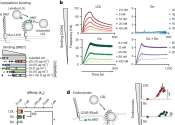Faster test for Ebola shows promising results in field trials
A team of researchers with members from the U.S., Senegal and Guinea, in cooperation with Becton, Dickinson and Company (BD), has developed a faster test for the Ebola virus than those currently in use. In their paper published ...









